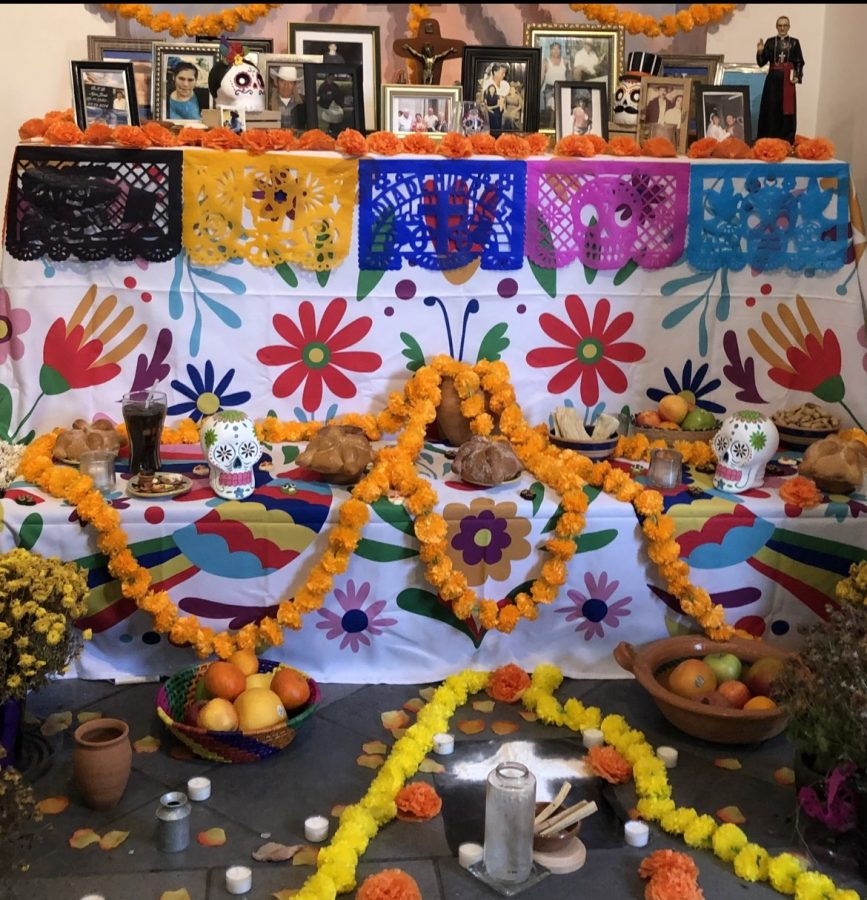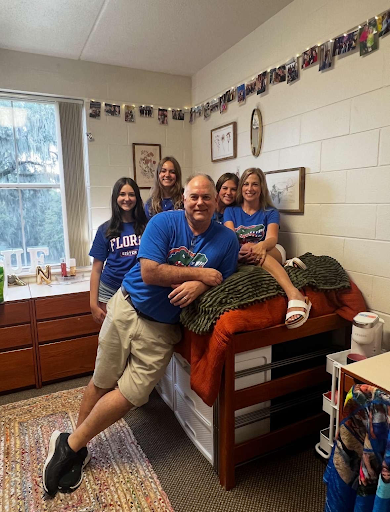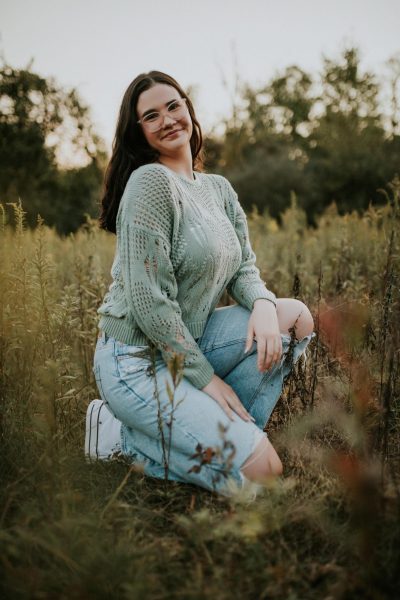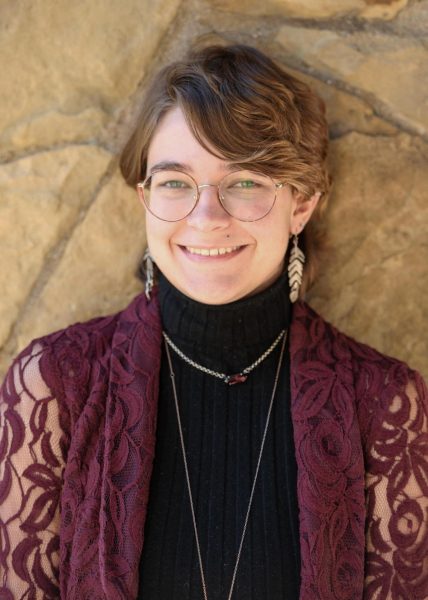Worldly Spooking
An ofrenda is decorated with bright orange flowers, loved-ones favorite foods, and other symbols. Every year, this is how part of the local Hispanic community celebrates El Dia de Los Muertos.
Haunted house scares, pumpkin patches, pillowcases filled with candy and trick-or-treating in exquisite costumes are just a few of the Halloween activities U.S. children and adults enjoy. But what does Halloween look like across the globe?
In Scotland and Ireland, the ancient Celtic festival of Samhain celebrates the original Halloween. The origins of most of the famous Western Halloween traditions are inspired by Samhain. In this celebration, the people began preparing for the end of summer and the return of the dark winter. As summer dissolved into winter, it was believed that the border between the world of the living and the world of the dead dissolved as well. Therefore, for one night, the souls of the dead, spirits, and fairy folk could easily cross into the physical world. To disguise themselves from evil spirits, people would dress in costumes and go from house to house reciting poetry in exchange for food. The souls of dead ancestors were honored with feasts, and bonfires were lit to keep the darkness at bay. Today, in the ancient walled city of Londonderry, the walls are illuminated with lights, magicians, dragons, vampires and all kinds of creatures. They also eat the traditional food barmbrack, a fruitcake containing prizes of straw, coins and rings. The prizes are used to tell fortunes. If a coin is revealed, it means the lucky recipient will enjoy good fortune or be rich; a ring means that the person will soon be wed; a piece of straw means that a prosperous year is on its way. In Latin America and Spain, el Día de los Muertos, the Day of the Dead, takes place on November 2, and is commemorated with a three-day celebration that begins on the evening of October 31. The celebration has strong Catholic roots and honors loved ones who have passed. It is believed that the loved ones spiritually cross back into the Earthly world for the celebration. Ofrendas are carefully constructed with love in the family home to welcome the spirits back. They are covered with candy, flowers, photographs, and samples of the deceased’s favorite foods and drinks. One of the most recognizable symbols of el Día de los Muertos is the sugar skulls decorated with brightly colored ornamentations. The skulls represent death as a celebration of one’s life.
In France, Halloween is not a French tradition and is a relatively new, controversial topic. Some do dress up and search for candies. French children are said to be unaware that Halloween costumes do not have to be ghoulish. No fluttering fairies or sparkling mermaids walking down the pretty French streets.
Although not an embedded tradition yet, Italy definitely embraces Halloween. In Rome there are Halloween tours of creepy catacombs lined with mummies and bones.
In Bologna, those filled with the Halloween spirit can visit medieval castles and towers during special evening tours. From the end of October through early November, Venice hosts Spettacoli di Mistero (Shows of Mystery), which are special plays and performances based on the legends and mysteries of Venice. Italians extend Halloween to All Soul’s Day, celebrated on November 2nd, in which past loved ones are remembered and honored. Fave de Morti, or Beans of the Dead, are popular cookies eaten and made around this time. The connection between beans and death goes back to ancient Rome when it was believed that the souls of the dead lived in black fave beans. It is interesting to note that most areas around the world relate Halloween culture to religion and honoring the dead. Although popular in some places, Halloween is not a spooktacular event everywhere. In Africa, Halloween is barely celebrated because most people believe it is a kind of black magic or witchcraft since it involves the dead coming back to the land of the living to celebrate. Halloween is celebrated mostly widely in the U.S. and the “American Halloween” has had great influence in the increasing popularity of Halloween in other regions of the world.
Halloween means something different to everyone and is uniquely celebrated by people all over the world. Happy Halloween! Go have some of your own skele-fun!
Krista is a senior and very happy to be on The Hiller staff. When not busy with school work or on the field, she enjoys spending time outside and with...






